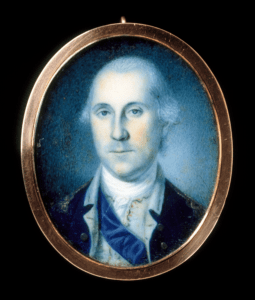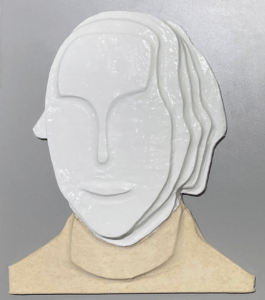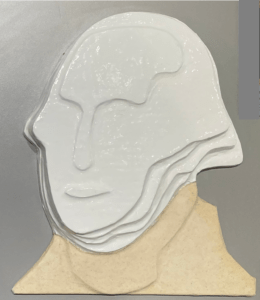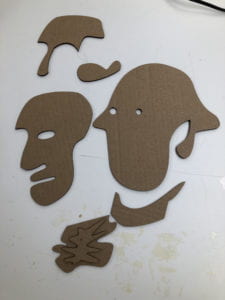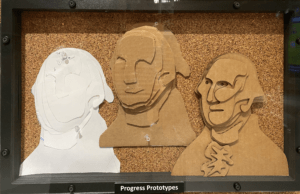On this page:
Exhibit Description
Touch Objects
In front of you are two tactile interpretations of George Washington. Each piece is 12 inches wide by 14 inches tall and is located on the diagonal shelf below the QR Code.
The left tactile represents a younger George Washington which the right tactile represents an older George Washington. Both images feature Washington at a 3/4 profile view. The tactile consists of Washington’s head, represented using smooth painted cardboard, and his clothing, represented with fabric covered cardboard.
Starting at 12 o’clock, is the top of Washington’s head. At 3 o’clock, you will find levels representing his hair. Between 5 and 6 o’clock, you will find Washington’s chin. Notice how the two areas on each are different. The younger having fewer levels and the older Washington having more. These levels represent the jowls that are depicted in the original painting.
The Challenge
Many museums must display objects and artifacts in a protected environment. They are too fragile for visitors to hold or touch, and reproductions can be expensive or easily worn down. However, tactile (touch) experiences can help all visitors better understand an object. This is especially important for visitors who are low-vision, blind, neurodiverse and tactile learners.
The Opportunity
Students worked with the Intrepid Museum and Macculloch Hall Historical Museum in New Jersey to explore how the historic house could use touch to convey the sense of aging as depicted in a 19th century oil painting of George Washington.
The Solution
Creative use of low cost, everyday materials can allow for tactile objects that are easy to repair and replace. Using affordable material such as layered cardboard, this installation enables a visitor to touch and feel the difference between the tight and sagging face of a young and older George Washington, asking the question “what does aging feel like to the touch”?
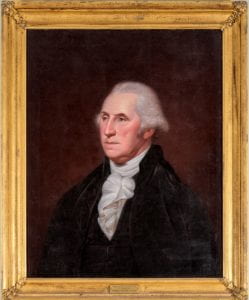
Portrait of George Washington, Charles Willson Peale (1741-1827), American,
Oil on Canvas, circa 1795
